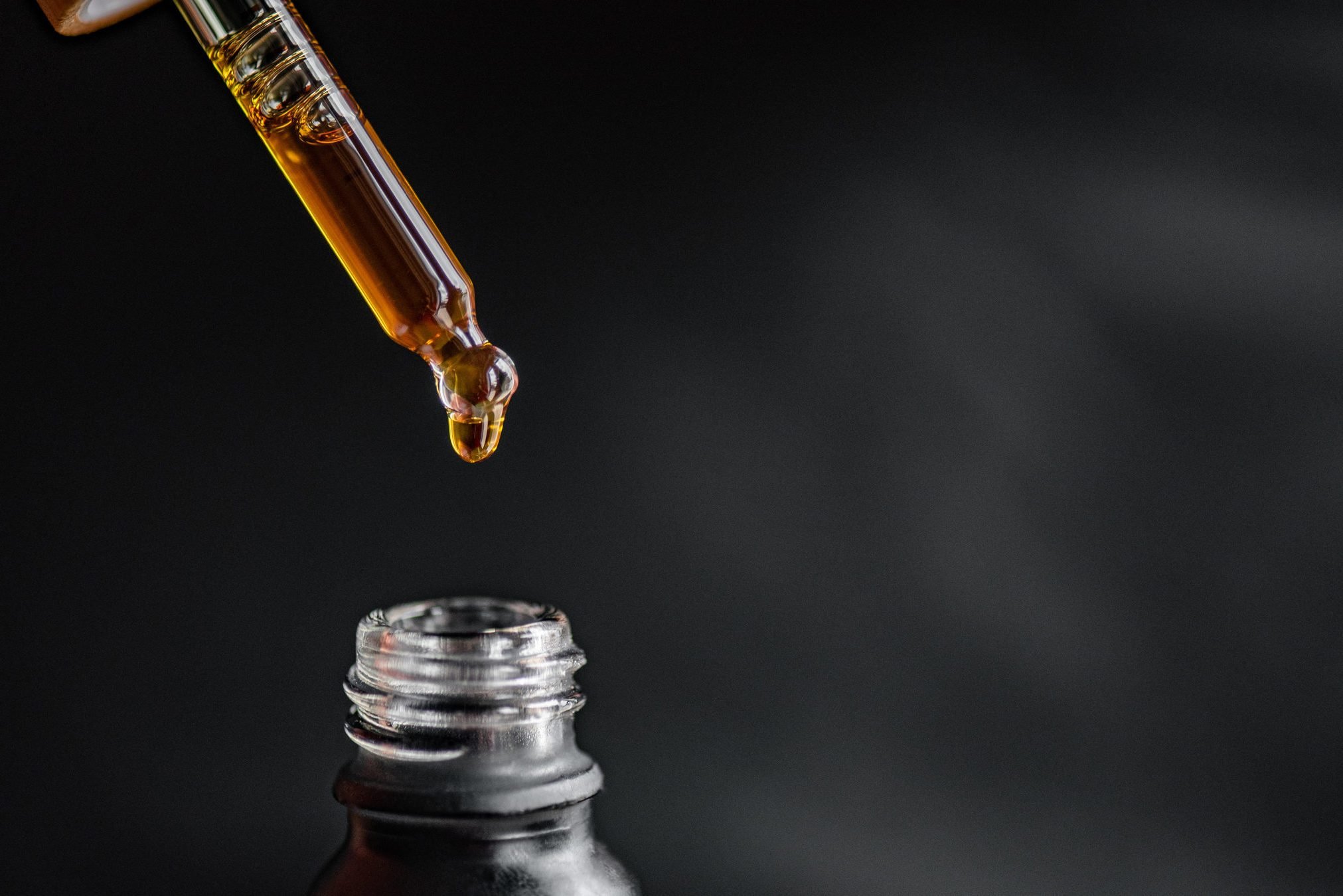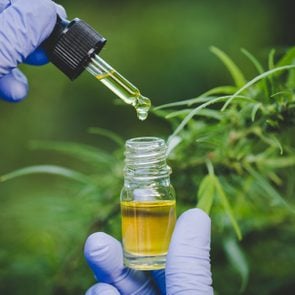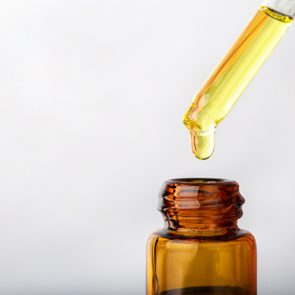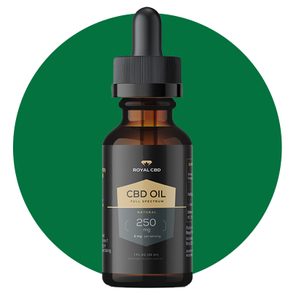Here’s What You Should Know About CBD Tinctures
Updated: Mar. 04, 2021
Tinctures are a popular and highly concentrated type of CBD. Learn more about how to use CBD tinctures, their dosages, and the potential health benefits.
Our editors and experts handpick every product we feature. We may earn a commission from your purchases.
CBD products are popular
Cannabidiol or CBD can be found in practically everything—chocolate, suntan lotion, pet products, nail polish, and toothpicks, to name just a few.
A 2018 survey published in Cannabis and Cannabinoid Research documented a total of 4,135 methods of administration among about 2,200 CBD users. The most common was CBD taken sublingually (under your tongue) either as a tincture, liquid, or spray. (Check out the best CBD sprays for pain.)
Tinctures, a highly concentrated form of CBD, are one of the most popular methods of sublingual delivery when it comes to taking CBD.
But what exactly is a CBD tincture and how does it differ from CBD oil? Here’s are a few other things you need to know about CBD tinctures.
What is CBD?
CBD is one of about 100 cannabinoid compounds in the marijuana or cannabis plant. Specifically, it’s found in the flowers or “buds” as well as other parts of the plant (but not the seeds). Unlike its counterpart delta-9-tetrahydrocannabinol (THC), CBD does not get you high.
Most of the CBD in the United States comes from hemp, a cousin of the marijuana plant. The 2018 Farm Bill made it legal to grow hemp as long as it contained no more than 0.3 percent THC.
(Here’s more on the differences between CBD vs. THC.)
CBD tincture vs. CBD oil
In general, tinctures refer to “some kind of extract that is put under the tongue,” explains Kevin Boehnke, research investigator at the Chronic Pain and Fatigue Research Center at the University of Michigan Medical School in Ann Arbor.
Tinctures, the result of soaking herbs in a liquid, are usually stored in a glass bottle with a dropper.
Traditionally, herbal tinctures have been made by steeping plant material in alcohol for several weeks. For CBD, hemp flowers or buds are steeped in alcohol or a mixture of alcohol and water to extract the CBD from the plant, resulting in a highly concentrated solution.
However, a tincture can also be made by steeping hemp in a plant-based oil or other substances. (This is the more common method now used to create CBD tinctures.)
The highly concentrated CBD can have other added ingredients, like sweeteners, resulting in a final product that may or may not contain alcohol. It’s important to note that CBD tinctures and CBD oil are terms often used interchangeably but they aren’t necessarily the same thing—although the labeling can be confusing.
CBD oil can come from CBD extracted using a different method and added to an oil carrier agent like olive oil, sesame oil, or MCT oil (derived from coconuts). Tinctures can also be a way to deliver CBD oil, according to Martin A. Lee, co-founder and director of Project CBD, a California nonprofit that promotes CBD research, and author of Smoke Signals: A Social History of Marijuana–Medical, Recreational, and Scientific.
“Herbal tinctures, including those made with cannabis or CBD, are traditionally made with alcohol,” says Boehnke. “However, the term tincture is now used interchangeably to refer to both cannabis products in carrier oils (e.g., olive oil, coconut oil) as well as products made with alcohol. CBD oil often refers to the oil-based products while the term ‘tincture’ can refer to either.”
Either way, a tincture refers to a highly concentrated herbal extract of CBD that may be more easily absorbed and act more quickly in the body, and should be used a few drops at a time.
How to use CBD tinctures
If you are using a CBD tincture, you should keep the tincture under your tongue for 90 seconds to two minutes for maximum effect. If you swallow it right away, the CBD has to go through your digestive tract, which takes longer to have any effect.
Keeping it under your tongue first allows much of the tincture to be absorbed by the blood vessels in your mouth and means it works quicker—usually in 15 minutes to an hour. The effect usually lasts six to eight hours.
Because it acts so quickly, tinctures may be able to help with acute conditions, where you’re hoping for quick relief, says Bonni Goldstein, MD, medical director and owner of Cannacenters, and author, Cannabis is Medicine: How Medical Cannabis and CBD are Healing Everything from Anxiety to Chronic Pain..
Also, a small amount can go a long way.
“It’s usually so concentrated that you typically only need a tiny, tiny amount,” says Boehnke. And, unlike a lot of CBD edibles such as CBD gummies or cookies, tinctures don’t contain sugar.
With tinctures, some of the CBD also goes through the digestive tract. Eating food at the same time help may speed up the effect.
“We recommend that people eat something high fat along with it that like avocados or eggs,” says Dr. Goldstein. “There’s some evidence that people who take this in a fasting state have a little bit of delay in onset,” she adds.
Vaping is the only method that works faster than tinctures. However, the effects from vaping CBD don’t last as long (usually only two to three hours), and it’s considered a riskier delivery method because unknown contaminants in the oil may pose a risk to the lungs.
Vaping has been linked with multiple cases (including some deaths) of EVALI, or e-cigarette or vaping products use-associated lung injury. Those cases occurred most often in people vaping THC from non-commercial sources, like family, friends, or online dealers.

CBD tinctures and dosing
Tinctures should come with a clearly marked dropper (usually 0.5 or 1 milliliter) so you can correctly calibrate dosages. Pay attention to how much CBD is in each dropperful. (This should be marked on the label.)
Deciding what dose you need is another matter. Project CBD recommends starting with 2.5 to 5 milligrams, but this will vary depending on what you use it for.
In a 2019 systematic review, published in the British Journal of Clinical Pharmacology, researchers reviewed nearly three dozen studies that offered a range of CBD doses (less than 1 to 50 mg per kilogram of body weight per day) for a variety of health conditions, from epilepsy to anxiety.
The researchers found that studies with more positive outcomes tended to use higher doses of CBD. To reduce the risk of side effects (more on those later), experts recommend starting low and going slow, regardless of why you’re using CBD.
What can you use CBD tinctures for?
People have used CBD tinctures for a variety of health conditions, from anxiety to insomnia, but some use them for general wellness.
In the 2018 survey, 62 percent of respondents said they used CBD to treat a medical condition, most commonly pain, anxiety, and depression. People also report using it for insomnia, migraines, seizures, pain, arthritis, and inflammatory conditions.
However, just because people use CBD doesn’t mean there’s scientific evidence supporting it. In fact, most of the available research comes in the form of animal studies and anecdotal reports, says Lee.
CBD for seizures has the best evidence behind it, says Dr. Goldstein. The only CBD-derived drug that is approved by the Food and Drug Administration (FDA) is Epidiolex, to treat rare forms of seizure conditions in children.
There’s been research suggesting that CBD has anti-pain and anti-inflammatory effects in the context of arthritis, cancer, prediabetes, and eye injuries. Again, this is preliminary and limited to animal studies. There’s been very limited research on CBD tinctures specifically.
Types of products
Tinctures and other CBD products are typically available in three basic types, depending on the ingredients:
- Full-spectrum CBD: This contains all of the components of the hemp plant (Cannabis sativa), including CBD and also small traces of THC and terpenes, which are plant compounds.
- Broad-spectrum CBD: It’s full-spectrum but without the THC.
- CBD isolates: The purest form of CBD and only contains CBD.
Thanks to the “entourage effect,” products that are full- or broad-spectrum may have a more powerful effect as they interact synergistically, says Lee.
Is CBD legal?
In the United States, currently 36 states (and counting) have legalized medical marijuana which means CBD as well. In these states, you can get CBD legally from licensed dispensaries.
On the other hand, the Drug Enforcement Administration, which is a federal agency, still considers marijuana and all its derivatives, including CBD, to be Schedule I controlled substances, which means they’re illegal.
Meanwhile, the FDA does not consider CBD to be a dietary supplement ingredient, which means that regulation of CBD products is virtually nonexistent and product quality is uneven.
Are CBD tinctures safe?
For the most part, CBD is safe as long as you get a quality product. There is the possibility that CBD, especially at high doses (hundreds or thousands of milligrams), can interact with other medications.
Before trying a product, check with your health care professional and scan this list of potential drug interactions from the National Library of Medicine.
Some studies have reported side effects like fatigue, decreased appetite, dry mouth, and diarrhea after using CBD, while others have not.
There’s little evidence at this point on the effects of long-term use of CBD in tinctures or any other form. If you don’t choose products carefully, you could end up with one that contains contaminants or doesn’t contain the amount of CBD listed on the label.
How to buy CBD tinctures
If you’re in a state where CBD is licensed, work with a health care professional or a licensed dispensary which are subject to certain standards. If you’re unable to do that, follow these guidelines for buying CBD:
- Only buy from companies you can contact either by phone or through their website.
- Ask for a certificate of analysis (COA) for any product. This verifies that a third-party independent lab has tested the batch and verified its ingredients. You can also scan the QR code on the package if there is one.
- Buy U.S.-grown hemp, which is less likely to be contaminated.
Next, here’s a buyer’s guide for the best CBD oil for pain.
















